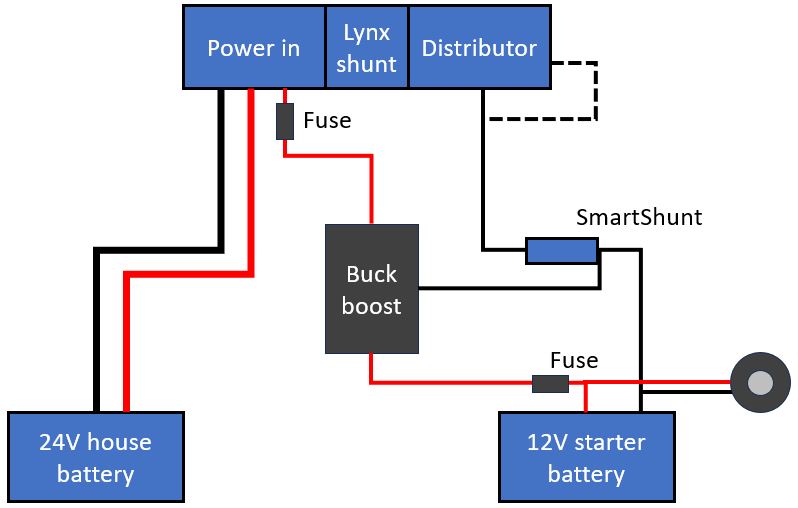I have an existing Victron System in my RV. Lynx 1000 Distribution, Lynx 1000 Shunt, Lynx Power in 1000. Multiplus 24v/3000 va, two MPPT 150/160, Orion DC/DC 24/12, color contol GX.
I want to add a BuckBoost 12/24 DC-DC 50 A converter to use the second alternator in my vehicle to charge the 24v batteries when driving.
1. I am not sure where to add the 24v buck boost input. I think to the Lynx 1000 power in. (no room in the Lync 1000 Distribution).
2. I would use a smart shunt 500 to measure current and read data to the Color Control GX. But the buck boost uses a common ground between the 12/24v. The shunt is connected to the ground. I am not sure what current it would be measuring?
2. I would like to add the smart shunt to the Color Control GX. The Color Control GX has two VE.direct inputs and both are used. I assume I can use the VE.direct to usb interface?
Regards,
David

